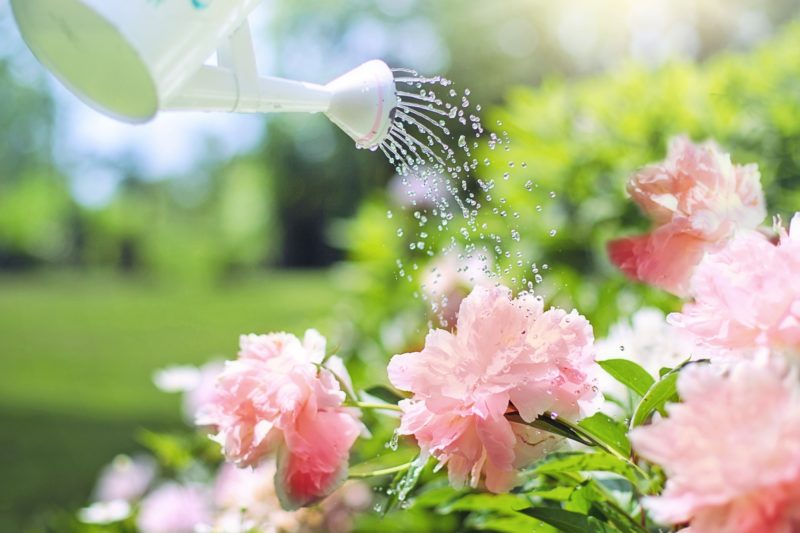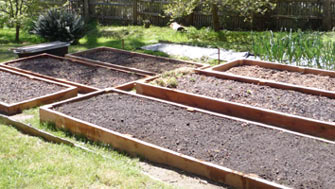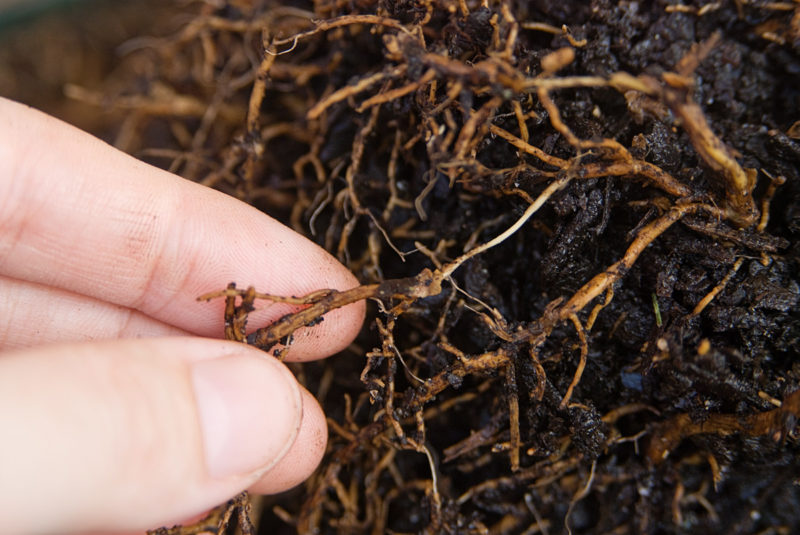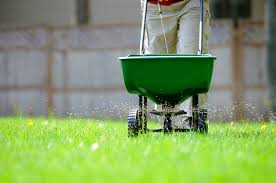Fertilisation for Established Plants: A Comprehensive Guide
Fertilising established plants is vital for maintaining a thriving, resilient garden. Think of your garden soil as a bank account: every time a plant grows, blooms, or produces fruit, it makes a withdrawal of essential soil nutrients. Over time, these resources are depleted through plant growth, rainfall, and natural decay processes. Without regular deposits, the account runs dry.
Replenishing these nutrients is the key to keeping your plants healthy, structurally strong, and highly resistant to environmental stressors, common pests, and aggressive diseases. Regular, thoughtful feeding is the ultimate proactive gardening step.
In this Jim’s Mowing NZ guide you’ll learn:
- Why Mature Plants Still Need a Fertilization
- Steps to Proper Fertilization of Mature Plants
- Testing Your Soil
- How to Apply Fertilizer
- How to Choose the Right fertilizer
- Monitoring Water and Soil Health
- Specialized Care for Lawns
- How to get professional gardening help
Why Mature Plants Still Need a Fertilisation
Many gardeners assume that once a plant is mature, its feeding needs decline. That’s simply not true. Even mature plants require a consistent nutrient supply for maintenance, vigor, and structural integrity. A well-fed plant maintains steady growth, blooms abundantly, and resists stress far better than a hungry one.
The Critical Trio: N-P-K (The Plant Powerhouses)
The three primary macronutrients, known by their letters N-P-K, are the foundation of plant health. Understanding their roles helps you choose the right product:
-
Nitrogen (N)
The Growth Engine. Nitrogen is essential for producing chlorophyll, the compound plants use for photosynthesis. It promotes that signature lush, leafy, green growth. A clear sign of Nitrogen deficiency is chlorosis (yellowing) in older leaves.
-
Phosphorus (P)
The Energy Master. Phosphorus is critical for energy transfer within the plant. It supports strong root development, vigorous cell division, and abundant flower and fruit production. It’s particularly important during early establishment and blooming cycles.
-
Potassium (K): The Regulator
Potassium doesn’t form part of the plant structure, but it regulates critical internal processes like water uptake (osmoregulation) and enzyme activation. It’s the element that builds resilience, enhancing the plant’s ability to resist drought, disease, cold, and general stress.
Feeding Frequency
Trees, due to their deeper and slower-growing root systems, typically require fertilising only every few years. However, shrubs and general landscape plants, which put out more frequent new growth, often benefit from yearly feeding.
Steps to Proper Fertilisation of Mature Plants
1. The Essential First Step: Test Your Soil
Before applying any fertiliser, the single most valuable step you can take is to test your soil’s current condition. A professional soil test provides an accurate snapshot of the existing nutrient levels and measures the soil’s pH, which is arguably the most critical factor in determining nutrient availability.
Why pH Matters (Nutrient Lockout)
 Soil pH measures acidity or alkalinity. While most plants prefer a slightly acidic to neutral range (pH 6.0 to 7.0), the wrong pH can cause a serious problem called nutrient lockout.
Soil pH measures acidity or alkalinity. While most plants prefer a slightly acidic to neutral range (pH 6.0 to 7.0), the wrong pH can cause a serious problem called nutrient lockout.
Here’s the crisis: If the pH is too high or too low, nutrients that are already present in the soil become chemically bound. This means the plant cannot absorb them, making the fertiliser you apply useless. A soil test provides specific recommendations for adjusting pH (e.g., adding lime or sulfur) before you even consider adding more fertiliser.
- Targeted Feeding
Use the test results to identify specific deficiencies. If you only need one or two elements, use a targeted fertiliser rather than an all-purpose product. This focused approach ensures maximum benefit and prevents imbalances.
- Avoid Over-Fertilising
Over-fertilising is wasteful and can be destructive. It causes a build-up of salts that can burn roots or harm the beneficial microbiology of the soil.
2. General Application Guide: Timing and Technique
Timing and technique are crucial. You need to provide nutrients when the plant is ready to use them, and you must apply them where the roots can actually absorb them without getting burned.
When to Apply: Timing is Everything
Apply fertiliser when plants are actively growing, which is generally in spring and early summer. This timing directly supports the surge of new foliage and blooms, providing energy exactly when the plant needs it most.
Crucially, avoid late-season applications (late summer or early autumn), particularly those high in Nitrogen. Why? This encourages soft new growth that may not have time to harden off (toughen) before cooler weather or frost arrives. This vulnerable new tissue is highly susceptible to frost damage and disease, often leading to unsightly dieback.
How to Apply: Targeting the Drip Line
 The goal is to target the root zone, specifically the fine feeder roots that are responsible for nutrient uptake. These roots are concentrated at the outer edge of the plant’s canopy, known as the drip line .
The goal is to target the root zone, specifically the fine feeder roots that are responsible for nutrient uptake. These roots are concentrated at the outer edge of the plant’s canopy, known as the drip line .
- Preparation
Clear away thick mulch or debris from the soil surface so the fertiliser directly contacts the ground.
- Spread Evenly
Spread the fertiliser evenly in a wide circle. Start a few inches away from the trunk and extend out to slightly beyond the drip line.
- Avoid the Trunk
Keep the fertiliser material well away from the trunk or main stems to prevent direct contact, which can cause chemical burning and damage the bark.
- Water In
Water thoroughly after application to dissolve the nutrients. This carries them down into the soil solution, allowing the feeder roots to absorb them quickly.
3. Choosing the Right Fertiliser Type
Fertilisers come in various forms, dictated by their source and texture. The choice depends on your goal: fast results or slow, long-term soil improvement.
Organic vs. Synthetic
- Organic Fertilisers
Derived from natural sources like compost, manure, bone meal, or seaweed. These release nutrients slowly and steadily as they are broken down by soil microbes. Their major advantage is that they also improve the soil’s texture, water retention, and overall structure long-term. The trade-off is that results take longer to appear.
- Inorganic (Synthetic) Fertilisers
These are manufactured from synthetic, mineral compounds. They deliver nutrients quickly and allow for precise control over NPK nutrient ratios. Because they are immediately available, they must be applied with extreme caution to avoid the dreaded root burn.
Formulation: Granular vs. Liquid
- Granular (Slow-Release
Ideal for slow, steady feeding over several months. These provide a reliable, long-term food source that feeds the plant consistently throughout the growing season.
- Liquid (Quick-Release)
Best for quick results or when correcting a known deficiency, as the nutrients are instantly soluble. Liquid forms can also be used for foliar feeding—a rapid way to deliver nutrients by spraying them directly onto the leaves.

4. Integrated Plant Care: Water and Soil Health
Fertilisation is only one part of the equation. If you provide a five-star meal but the plant can’t eat it, it won’t help. Fertilisation is only effective when supported by proper watering and healthy soil conditions.
The Role of Water: Nutrient Delivery
Without enough moisture, nutrients cannot dissolve in the soil solution and move to the plant roots. Think of water as the plant’s digestive system; it needs moisture to unlock and transport the nutrients you’ve applied.
- Deep, Infrequent Watering
Water deeply (allowing water to penetrate several inches) but less frequently. This forces the plant to send roots deeper, creating a strong, drought-resilient foundation.
- Timing
Watering in the morning is the best practice. It ensures the water soaks in before peak heat causes excessive evaporation, and it guarantees leaves are dry by nightfall, which is critical for reducing the chances of fungal growth.
- Mulch Use
Apply a 2–3 inch layer of organic mulch around your plants. Mulch is crucial for retaining soil moisture, moderating soil temperature, and keeping competing weeds to a minimum.
Improving Soil Structure and Aeration
Roots need oxygen to breathe, and compacted soil suffocates them. When maintaining garden beds, proper soil structure ensures nutrients, water, and air can reach the roots effectively.
- Loosen Compacted Soil
Use a pitchfork or garden fork to gently loosen the top layer of compacted soil to dramatically improve air and water penetration.
- Incorporate Organic Matter
Mix organic matter, such as high-quality compost or aged manure, into the top 10–15 cm of soil periodically. Organic matter improves both drainage in heavy clay soils and water retention in dry, sandy soils.
- Avoid Wet Soil
Never work or till soil when it is overly wet. Compressing saturated soil immediately destroys its structure, leading to severe compaction and poor drainage.
5. Specific Care: Fertilising the Lawn
Your lawn requires a dedicated feeding schedule, as it is a dense, high-demand collection of shallow-rooted plants.
The same N-P-K principles apply, but the ratios often prioritize Nitrogen for that rapid, lush, green color:
- When to Fertilise Lawns
Feed the lawn in early spring to promote vigorous new growth. Apply a second, robust feeding in late summer or early autumn to strengthen the roots and build nutrient reserves before winter dormancy. Crucially, avoid heavy feeding during periods of extreme heat, as this greatly increases the risk of burning the grass blades.
- How to Apply to Lawns
Use a calibrated broadcast or drop spreader to ensure the product is distributed perfectly evenly. After spreading, water lightly to move the nutrients down into the root zone and prevent them from sitting on the blades. Avoid excessive thatch build-up by following application rates precisely.
- Sustainable Lawn Care
For long-term health, alternate between quick-release synthetic fertilisers for immediate greening and slower-release organic fertilisers to improve the soil’s structure and microbial activity.
6. Key Fertilising Mistakes to Avoid
A few common errors can quickly negate all your hard work and lead to plant decline. Avoid these pitfalls:
- The Over-Fertilising Crisis
This is the most common and damaging mistake. Applying too much fertilizer leads to a build-up of soluble salts in the soil. This salt concentration draws moisture out of the root tissues via osmosis, causing severe dehydration and visible root burn (seen as brown, crispy leaf edges or sudden dieback).
- Ignoring Soil pH
If the soil pH is not in the proper range for your plants, you will experience nutrient lockout. The elements are physically present in the soil, but the plant simply cannot access them. Always test your soil!
- Applying to Dry Soil
Fertiliser applied to parched soil risks immediate, devastating root burn because the salts cannot dissolve and dilute properly. Always ensure the soil is slightly moist before application and lightly watered afterward.
- Using the Wrong Ratio
Check the NPK ratio and ensure the fertiliser is specifically suitable for the plant you are feeding. Using a high-nitrogen turf food on flowering shrubs, for example, will result in lots of leaves but very few blooms.
When to Call the Experts
While DIY fertilisation is rewarding, there are times when professional expertise is essential. If your soil test reveals complex issues like extreme pH imbalances (requiring sulfur or lime amendments), severe micronutrient deficiencies, or widespread lawn diseases, professional intervention can save you significant time and cost.
If you simply lack the time for seasonal feeding, deep root maintenance, or consistent application, it’s best to call in the help. Jim’s Mowing NZ provides comprehensive gardening and lawn care services across New Zealand. We ensure your established plants and lawn receive perfectly balanced nutrition, professional pH correction, and expert maintenance tailored to your local environment. Let us take the guesswork out of achieving a perfect, vibrant garden.
Conclusion
Combining proper feeding, correct watering, and regular soil monitoring are the key elements in maintaining a vibrant and resilient garden. By understanding your soil’s specific needs, choosing the right products, and applying them at the correct time, you actively reduce stress on your plants.
This proactive approach makes them naturally more resistant to pests and disease, ensuring they reward you with lush greenery, strong roots, and lasting colour season after season. With the right care, your garden—and your lawn—will thrive.
For all of your gardening and landscaping needs call Jim’s Mowing on 0800 454 654 or book online today!





